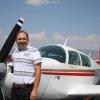Ever Run a Tank Dry In Flight
-
Members Online
- markgrue
- joemoriss
- Flyler
- IFLYIFR
- amillet
- JRG
- Schllc
- Ragsf15e
- CVO
- Rangoon
- hammdo
- Bradmas
- flyingscot
- EarthboundMisfit
- xtachx
- Justin Schmidt
- Planegary
- Firehawk335
- Paul Thomas
- bixmooney
- exM20K
- Samir13k
- Fritz1
- hubcap
- Scottknoll
- mmcdaniel33
- Aerodon
- Fly Boomer
- Mufflerbearing
- Pinecone
- EricJ
- kortopates
- Nathan211


Recommended Posts